US commercial crude oil inventories dropped -5.2m barrels in the week ending June 4, versus expectation of -3.3m barrels. At 474.0m barrels, oil inventories are about 4% below the five year average for this time of year. Gasoline inventories rose 7.0m barrels. Distillate rose 4.4m barrels. Propane/propylene rose 5.5m barrels. Commercial petroleum rose 15.5m barrels.
WTI crude oil’s up trend continues this week and hits as high as 70.46 so far. It remains to be seen if it could sustain above 70 handle. But for now, outlook will remain bullish as long as 68.33 support holds. Next target is 38.2% projection of 33.80 to 67.83 from 61.51 at 74.50.




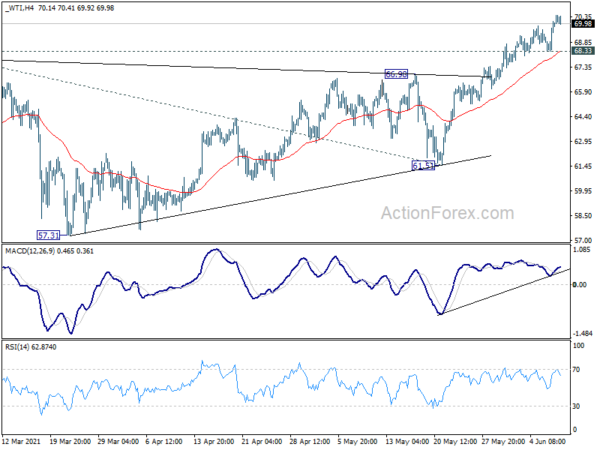
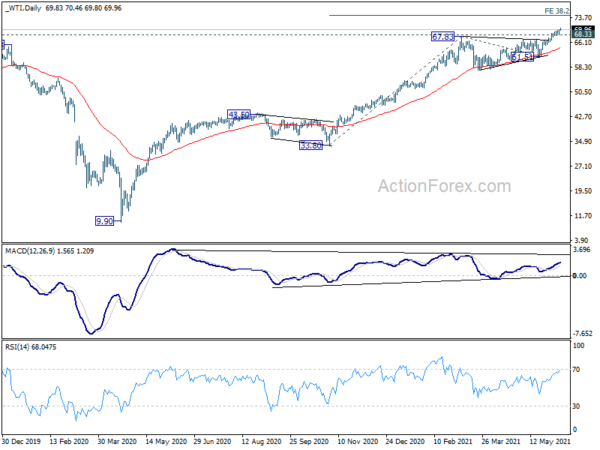
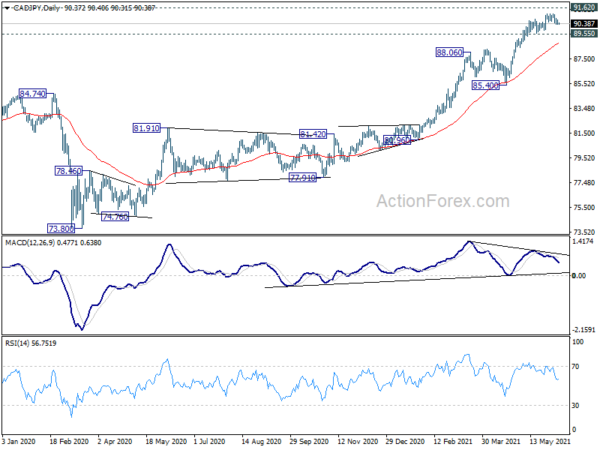
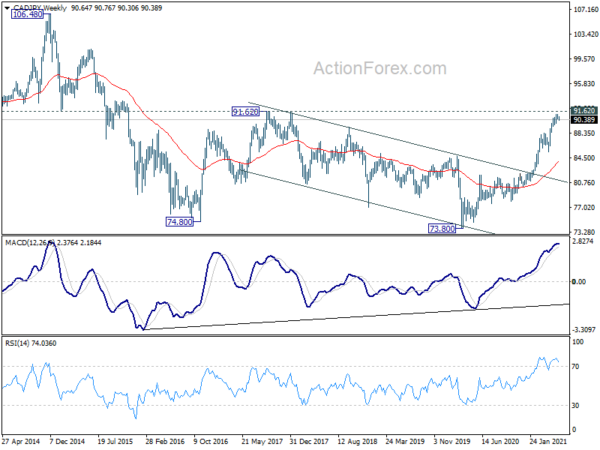
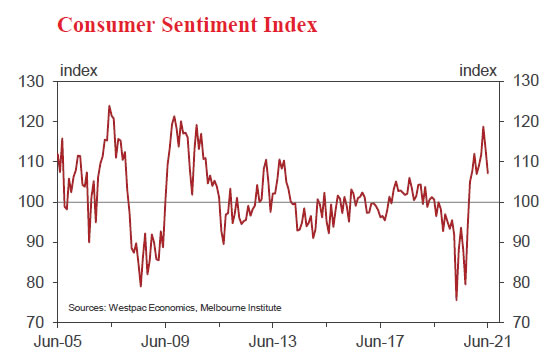

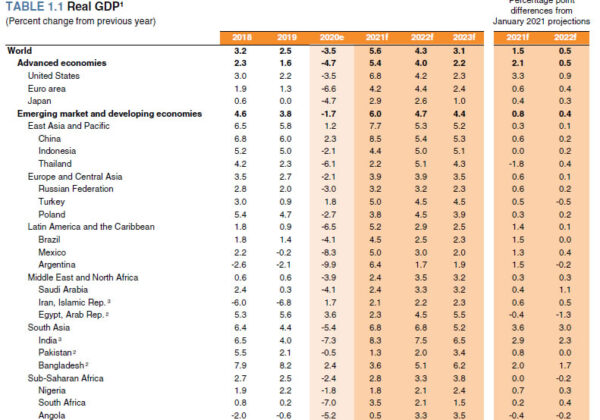
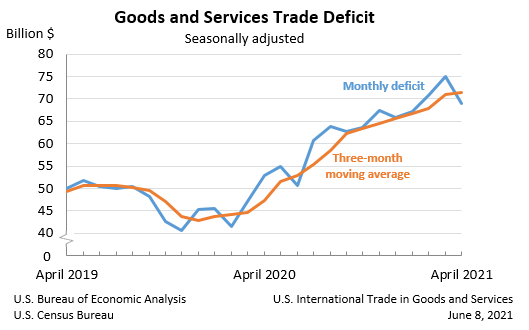
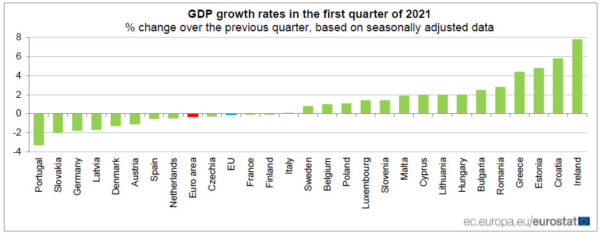
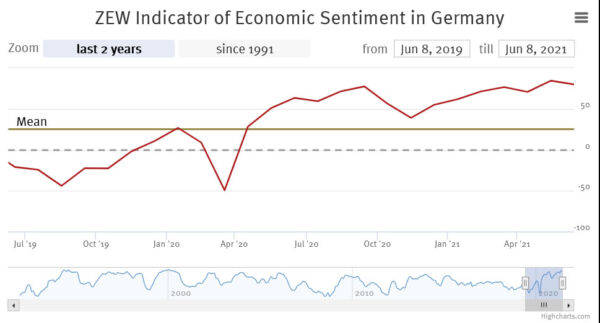
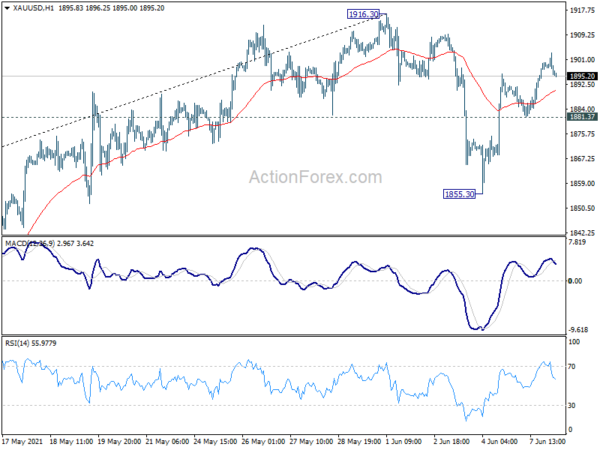
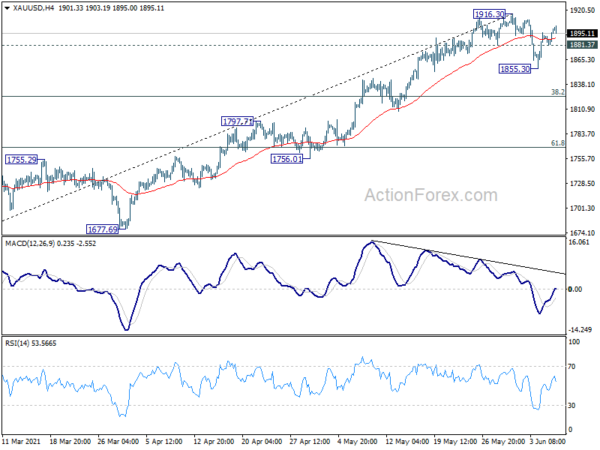
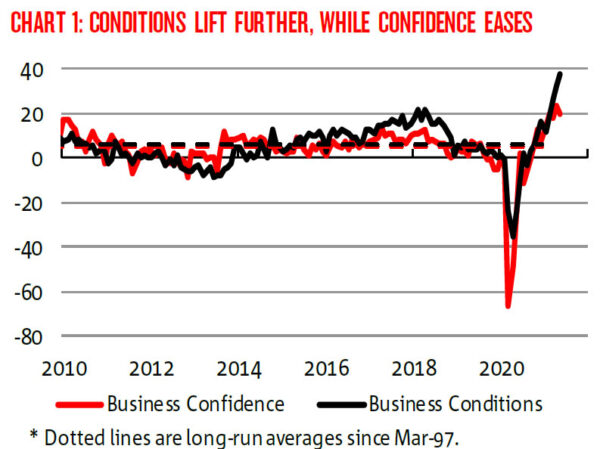
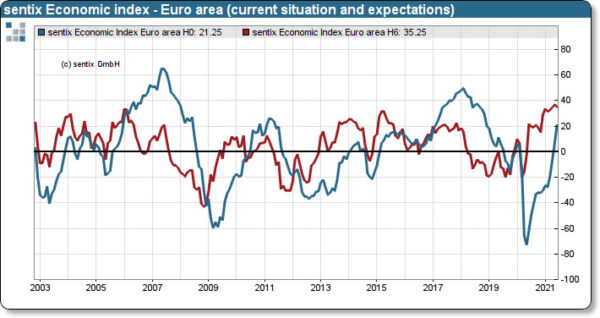

Japan PPI jumped to 4.9% yoy in May, highest since 2008
Japan PPI accelerated to 4.9% yoy in May, up sharply from April’s 3.8% yoy, above expectation of 4.5% yoy. That’s also the largest annual rise since September 2008. Oil and coal prices jumped 53.5% yoy. Nonferrous meals were up 41.6% yoy. Wood and lumber prices were also up 9.7% yoy.
Shigeru Shimizu, head of the BoJ’s price statistics division, said, “rising commodities prices reflecting the global economic recovery is pushing up wholesale prices for a broad range of goods.”
“The data shows companies are starting to pass on rising costs, though the gain in wholesale prices is driven more by external factors rather than domestic demand,” he said.